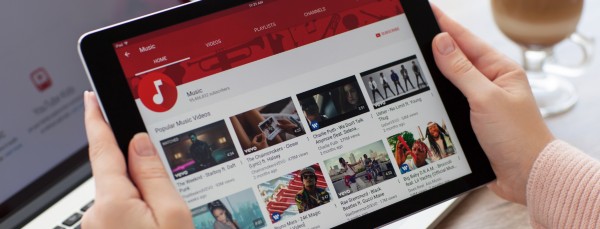Social Media is the perfect platform to tell your brand story but how do you show your personality across multiple platforms? We explore 17 ways you can do that for School Marketing.
Storytelling has always had a place in successful marketing. After all, people have been telling stories for centuries. We all respond to stories if told well. Plus, telling a story makes the information conveyed more memorable.Stories help us convey the personality of our school as well as create a connection with parents.
Is it possible to tell a story on social media? Aren’t social media posts supposed to be short captions? How can you possibly narrate a story within the framework of social media marketing?
Yes, you can tell stories on social media! And, to prove it, here are 17 practical ways you can use social media for storytelling – and actionable tips on how to implement them!
Create a narrative with your caption
Instagram is known as a visual platform, but a captivating caption can help complete the story. Use the caption to share a narrative as a complement to a beautiful image and then invite people to “Click the link in the bio to read more”.
Take Action: Try sharing a short story related to a photograph in more than three sentences. Keep in mind Instagram captions are limited to 2,200 characters; after three lines of text captions become truncated. Be sure to add emojis, @mentions and hashtags at the end.
Tell a visual story with your grid
A creative way to share a story on Instagram is to use a series of posts to help people visualize your story in your Instagram grid layout. This has become a very popular method of storytelling on Instagram.
Take Action: If this tactic sounds appealing, create an image on your profile using 3, 6 or 9 images. This type of Instagram layout is also called a puzzle layout. A tool to help you design your layout is Grids. You can also buy Instagram grid layout templates for Canva on Etsy or Creative Market. This is a fun way to share a story as it relates to your school.
Curate user-generated content
This strategy is a great way to engage families in your school and Instagram community. The idea is to curate user-generated content by sharing a short story and invitation to submit photos on your Instagram feed.
Take Action: Invite your Instagram followers to post a photo on Instagram with your branded hashtag and a promise to re-post a few selected ones. You can also offer a prize for the best photo. Ask community sponsors to donate an item as a prize.
Create a short video
Since Instagram is increasingly becoming more video-based, it makes sense to leverage Instagram’s power by posting short videos. Instagram videos are limited to 60 seconds or less, so you have to get creative to stay within this constraint. But remember, great stories can be told in seconds.
Take Action: Share the story of your school in a short 30 to 60 second video. The video doesn’t need stunning photography to work. You can even just use words.
Here are some tips to help you stay within Instagram’s 60 second parameters but still tell your story well:
- Stick to the point
- Use on-screen captions to help
- Expand on the video using text captions
- Square videos are more popular than rectangle ones but experiment with both layouts
Use a series of Stories
Instagram (or Snapchat) Stories are another way you can share stories on social media.
There are no limit to the number of Stories you can share on Instagram a day. However, 10 Stories seems to be a sweet spot for many schools. A Facebook photo album is another great way to share a story with your followers.
Take Action: Turn one of your recent blog posts into a series of Instagram Stories. Canva has awesome Instagram Story Templates to get your creative juices flowing. You can always upload images you, a staff/faculty member, parent or someone else has taken into Canva (with permission of course).
Write a long post
While shorter Facebook posts (50 characters or less) receive more likes, comments and shares, people will click on “See More” to read longer posts if the content is interesting. While it may seem like a hassle to read longer Facebook posts, they actually perform well according to a study conducted by National Public Radio.
Take Action: Consider writing longer Facebook posts to see how well they perform based on your audience. Try telling some longer stories instead of summarizing or directing people to click-through to your blog (unless you are trying to drive traffic to your blog).
Create a Facebook photo album
Since social media networks are visual platforms, people are drawn to images. A photo album is another great way to share your stories with your Facebook fans. Sharing the story of a school event is a perfect example of how this strategy can be used.
Take Action: Whenever you organize an event, invite students, staff, faculty, parents and other community members to take photos and send them to you. Create a Facebook photo album with the best photos.
Share a long video
Sometimes, even a collection of photos doesn’t do a story justice. A longer-version Facebook video might be just the answer. A Facebook video can be up to 120 minutes long, making this medium great for longer stories.
Take Action: Collect video testimonials from students and parents or messages from your faculty. Compile them into a video to share on Facebook.
Go Live
There are many reasons to employ Facebook Live as a storytelling strategy for your school. For one, there’s no better way to be authentic than streaming live. It’s also a great way to reach people since Facebook ranks live video higher in the Newsfeed during the broadcast.
When writing an outline for your Facebook Live, consider using the three-act structure (a model often used in screenwriting). An example of this can be seen in the viral Facebook Live “Chewbacca Mom” by Candace Payne.
- First Act (Setup) – Introduction of video where she describes her trip to Kohl’s to get the mask
- Second Act (Rising Action) – Build-up as she unboxes the Chewbacca mask
- Third Act (Resolution) – Climax of the video where she laughs uncontrollably
Take Action: Start by creating an outline for your Facebook Live using the three-act structure listed above. Try sharing tips, behind-the-scene videos or hold a question-and-answer session.
Sequence your Ads
Sequencing your ads means telling a story through a set of ads. It’s a way to show your targeted audience your ads in a sequenced, or step-by-step, fashion. This strategy is more advanced than regular “rotating” ads because it uses technology to determine which ads an individual has already seen and automatically shows them the next ad in the sequence.
A study conducted by partners Refinery29, Adaptly and Facebook tested regular ads with different creatives against sequenced ads. The results were mind-blowing. The group that was shown the sequenced ads converted at a much higher rate (86 percent higher) than the regular or control groups.
Take Action: If Facebook advertising is part of your marketing mix, consider using ad sequencing. Introduce your school in the first ad, share something about your school in the second, and have a call-to-action in the third. Here’s more information on how to sequence Facebook ads.
Tweet up a storm
Tweetstorm is a practice of sharing a train of though longer than the 140 characters allowed in a single tweet. A Tweetstorm is like a mini-essay written in quick succession. Usually, people will number the tweets in a Tweetstorm to indicate the sequence of the tweets.
To string your tweets together, simply reply to your previous tweet. Apps like Storm It make it even easier to Tweetstorm.
Take Action: Listicles make great Tweetstorms! Try sharing the key points of your list in a Tweetstorm. Remember to include the numbering in your tweets.
Create a Moment
Twitter Moments are easy-to-make curated stories. You can create Twitter Moments in one of three ways – through the Moments tab, your profile page or a Tweet detail.
Moments are a striking way to tell stories in Twitter.
Take Action: From Twitter.com (you can’t create Moments in the Twitter app), go to More > Moments. From there, click on the Lightening icon in the upper-right corner.
Next, add a Cover, Title and Description. Your Cover can be photos or videos from Tweets in the Moment, or you can upload your own image.
Now you can add tweets you’ve liked, tweets you’ve published, you can search for tweets using keywords or you can add a link to a tweet you want to include in your Moment.
You should keep your Moment to around 10 tweets. Include a mix of photos, videos and GIFs to keep your viewers engaged.
Ideas for Twitter Moments: curate Tweetstorms, take parents behind-the-scenes, curate news and timely events (perfect for COVID-19 related back-to-school news), or highlight a new teacher, class or something new your school is rolling out.
Most of all, have fun creating Twitter Moments for your school!
Attach multiple photos
Similar to photo albums on Facebook or carousel posts on Instagram, you can attach multiple photos to a tweet as a way to tell a story. It helps give more detail to your story or allows you to tell a longer story.
Take Action: Following your next event, attach up to four of your best photos in a tweet to give your Twitter followers an idea of what happened at your event.
Create a GIF
Like memes, GIFs are still popular, especially on Twitter. Apart from being popular, GIFs are entertaining and boost the performance of your Twitter account.
GIFS are also a great way to share an emotion or illustrate your tweet.
Take Action: Try creating your own GIFs using GIPHY or gifs.com.
SNAPCHAT
Design a relevant Snapchat Geofilter
Certainly kids are on Snapchat, and that means a lot of parents are too! Snapchat Geofilters may be one of the best ways to reach them.
A Snapchat Geofilter is a way to share where you are using a Filter Overlay. These filters allow mobile users to add specific locations to their photos they can share with their friends or followers. The location signals of the smartphone determine where the user is and provide the appropriate Geographical Filter based on the location.
There is a fee to create Snapchat Geofilters, so be sure to check to find out what the current rate is. The rate depends on the square footage of the area in which you want the filter to be turned on and how long you want the filter to be available. Some schools only turn the Geofilter on during certain days, like every Tuesday, and then promote it heavily.
There are certain rules you must abide by (i.e. no names or logos of trademarks, no offensive language, etc.) Your Geofilter needs to be in .PNG format and transparent.
Take Action: Design a Snapchat Geofilter for your school. Canva has Snapchat Geofilter templates you can work from. Be sure to promote when your Geofilter will be available! Make sure your Geofilter is cool enough students, staff, faculty and parents will want to use it!
YOUTUBE
Create a playlist
By now, you probably have a YouTube Channel set up for your school marketing. But not all schools recognize the importance of setting up a playlist as a storytelling mechanism. For example, Airbnb offers many delightful playlists, including one called “Airbnb Stories” with 46 (and counting) videos listed.
Take Action: Interview some of your students, parents, teachers, etc. and share their stories and experiences with your school in a video. Each video only needs to be a couple of minutes long. Then create a playlist with all of your testimonials in it. Be sure to optimize your YouTube videos for search to ensure they will be found!
ONE MORE IDEA
Create an infographic
An infographic is a great way to tell the story of your school in a visual way. In a study completed by Contently, infographics were found to outperform blog posts.
Take Action: Canva has excellent infographic templates to work from. Other tools to try include easel.ly, infogram, Visme, and Piktochart.
There are countless ways to tell stories on social media. I hope these 17 ideas will inspire you to experiment with many creative ways to tell your school story.
Read the full article here.



![[COURSE] Social Media Strategy Certification Course](https://www.schoolhouse.agency/wp-content/uploads/2021/08/COURSE-Social-Media-Strategy-Certification-Course-1024x483.jpeg)


